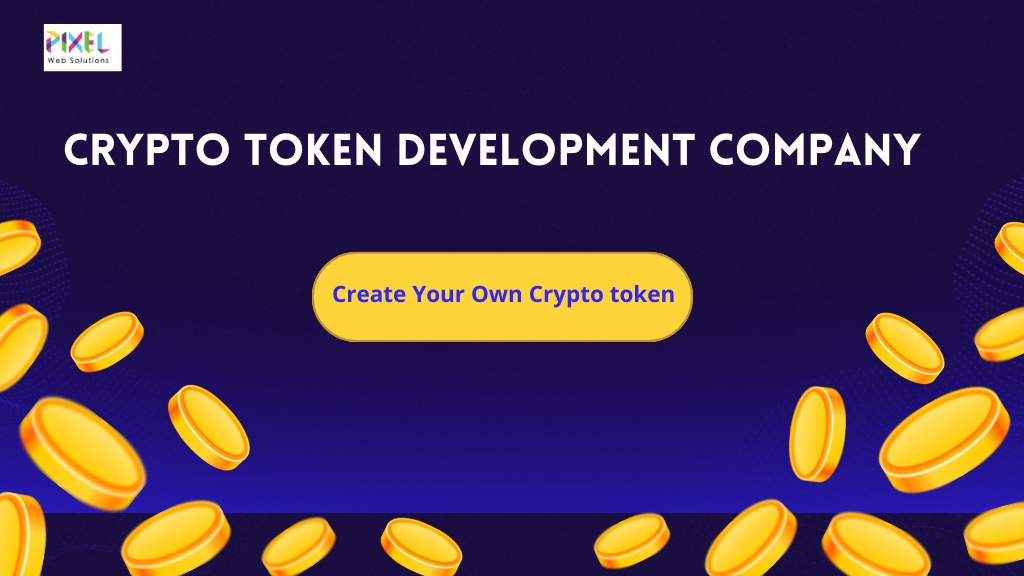The rise of cryptocurrencies and decentralized finance (DeFi) has led to a surge in token creation

But with the rapidly expanding ecosystem of blockchain platforms, how do you determine which one best aligns with your token’s goals?
Selecting the right blockchain is a strategic decision—one that can define your token’s success or failure. With so many options offering different features, the process can feel overwhelming, especially for newcomers to blockchain technology.
If you want to choose the best blockchain to create your crypto token it’s crucial to assess your project’s technical requirements, scalability needs, and target audience.
Here's what you should focus on when choosing a blockchain:
1. Purpose of Your Token
Before diving into technical aspects, you need clarity on why you're creating the token:
Utility Token: Will your token be used within a decentralized app (dApp)?
Security Token: Is it meant to represent a stake in a business or an asset?
Governance Token: Will it enable users to vote on protocol upgrades?
Stablecoin: Will your token be pegged to a fiat currency?
Your token’s use case heavily influences the ideal blockchain. For instance, DeFi applications often choose Ethereum or BSC, while NFTs might favor Polygon or Solana.
2. Transaction Speed and Scalability
Scalability matters when you expect high transaction volumes. Consider the Transactions Per Second (TPS) the blockchain can handle:
Ethereum (ETH): Secure but slower (~15-30 TPS)
Solana (SOL): Extremely fast (~65,000 TPS)
Polygon (MATIC): High throughput and low fees
Avalanche (AVAX): Scalable with subnets
If your token requires fast, frequent transactions (e.g., for gaming or microtransactions), prioritize high-performance blockchains like Solana or Polygon.
3. Cost of Deployment and Transactions
Gas fees (transaction costs) can significantly affect both users and developers. Ethereum, though robust, is infamous for high gas fees during network congestion. In contrast:
BSC (Binance Smart Chain) offers lower gas fees with EVM compatibility.
Polygon and Avalanche provide cost-effective solutions with fast confirmation times.
Tron and Fantom are also known for minimal transaction fees.
For startups or projects with tight budgets, platforms with low gas fees are ideal.
4. Security and Maturity
The security of your token depends on the underlying blockchain’s consensus mechanism and track record. More mature platforms like:
Ethereum
BSC
Polygon
Newer blockchains might offer innovative features but can pose higher risks due to limited adoption or vulnerabilities.
5. Developer Ecosystem and Community Support
A robust developer ecosystem ensures better tooling, documentation, and support for building and maintaining your token. Ethereum leads in this aspect with a rich library of resources and the largest community.
However, BSC, Avalanche, and Polygon are also growing rapidly, thanks to Ethereum Virtual Machine (EVM) compatibility, which makes it easier for developers to port Ethereum-based dApps.
Check if the blockchain offers SDKs, APIs, wallets, and smart contract libraries that align with your development needs.
6. Interoperability
As DeFi and Web3 grow, cross-chain compatibility is becoming essential. Platforms like Polkadot, Cosmos, and Avalanche are designed with interoperability in mind.
If your token is meant to interact with multiple blockchains, or be part of a larger ecosystem, choose a blockchain that supports bridges and multi-chain deployment.
7. Ecosystem and Adoption Rate
A strong user base and active dApps ecosystem can drive early adoption of your token. Ethereum still dominates in terms of active wallets and dApps, but BSC, Polygon, and Solana are gaining ground fast.
Total Value Locked (TVL)
Active wallets and developers
Popular dApps within the network
The more active and thriving the ecosystem, the higher the chances of your token being used and traded.
8. Regulatory Considerations
Different blockchains have varying levels of focus on compliance. If your token needs to comply with Know Your Customer (KYC) or Anti-Money Laundering (AML) regulations, it’s important to pick a platform that supports or facilitates these.
Some blockchains are building tools to help with tokenized securities and regulated DeFi applications. Ensure your chosen blockchain aligns with your legal and compliance needs.
9. Long-Term Sustainability
Finally, consider the future roadmap of the blockchain. Is the platform evolving? Does it have a vision for scalability, decentralization, and security?
Blockchains like Ethereum 2.0, Cardano, and Near Protocol are constantly improving and may offer long-term advantages for token longevity.
At Pixel Web Solutions, we specialize in end-to-end crypto token development across leading blockchains like Ethereum, BSC, Polygon, Solana, and more. Our blockchain experts help you evaluate the best platform based on your tokenomics, target audience, and scalability goals.
Partner with a trustedcrypto token development solution to get expert guidance on choosing the right blockchain, developing your token, and launching it successfully. With the right partner by your side, you can navigate the blockchain ecosystem confidently and bring your token vision to life.
